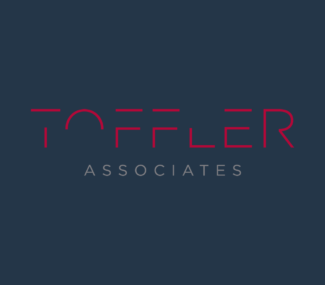Do You Know How to Structure Your Horizontal Organization?

In the first installment of this two-part series on the evolution and benefits of horizontal (flat) organizations, we looked at the transition from laddered Industrial Era structures to agile and collaborative, Knowledge Age organizational models. We considered the factors that should guide the development of a pure or hybrid flat model, including innovation objectives, culture, legacy, and mission.
With that in mind, the next step is to dissect the flat organizational model to explain the concepts that underlie its success. The information should inform your considerations as you run scenarios and work to tailor the most appropriate version of the horizontal model for your current and future organization.
Perhaps its greatest value is how adaptive the flat organizational model is. Every organization can customize a set of core elements to match their unique culture, objectives, and mission to drive growth, outcomes, and innovation. And it is not a one-and-done effort. It is an ongoing and iterative process. The process entails five main components.
Communications
Invite leaders from across the organization to cross-team meetings where you discuss how each unit can help the other solve pressing challenges.
Human Centered Design
Set up comfortable chairs and whiteboards in the connecting space or open offices between departments to encourage informal, collaborative conversations across functions.
Organizational Design
Bring together people who perform the same functions across the enterprise. In the case of a merger, connect people from the two organizations, regardless of department or market. Collaboratively draft compelling mission statements or charters around new business opportunities that everyone can rally behind.
Strategic Communications
When divisions are in conflict over an issue, help them articulate the source of their differences and explore creative ways to reconcile them for the good of the organization.
Scenario Based Planning
Host “alternative future” conversations. Encourage people from across the organization to attend, so you can “live in the future” to mitigate biases and gain the widest possible set of perspectives. The sole objective is to collectively imagine the ideal, transformed organization five years or more in the future.
Our team at Toffler Associates has engaged these concepts with private sector and public enterprise organizations for decades. Every structure born from the efforts is unique to the organization itself. But in each case, the entity has deployed several important aspects of a successful horizontal organization.
We encourage you to evaluate whether your business has the most advantageous Future Proof® structure possible by evaluating against following characteristics. Chances are likely that you have some of these elements working well, and others that require attention. Use that understanding to build a plan for bringing your culture and operational processes into a more useful Knowledge Age model.
Employee Centered Approach
The horizontal organizational structure has a fundamental emphasis on teamwork and collaboration. This is an employee-centered approach that encourages the workforce to invest time and energy on shared values and goals. This kind of empowered environment is particularly valuable in small businesses where relationships can act as force multipliers that accelerate innovation.
Teamwork
Teamwork may be the most fundamentally Knowledge Age characteristic because it increases efficiency, scalability, and depth of organizational knowledge. Rather than emphasizing individual jobs, value is focused on the collective goal of the company. The focus underscores the importance of collaboration and procedures that affect company output. From an execution standpoint, the team focus encourages cross-training, so members of the staff can operate across multiple core business functions.
Performance Incentives
Value is placed on how well groups work together, rather than on individual performances. Power struggles are replaced with incentives for group success. These can be economic incentives tied to team or organizational performance, or task owners within a collaborative effort. In any case, there is a greater opportunity to use incentives in broader ways to promote ownership, accountability, and empowerment.
Workplace Culture
Increasing job satisfaction has shown to increase motivation and productivity. For many companies, the horizontal organizational structure is centered on a “passionately articulated” sense of purpose. For example, Patagonia organizes around the mission of a world of self-sufficient natural explorers. Costco informs decisions with a vision of the American family that is discerning, thrifty, and empowered.
At Toffler Associates, we organize around a set of core principles that support the ongoing health of our firm. These are values like speaking truth to power, curiosity and lifelong learning, diversity of thought, and a commitment to connect – all of which encourage thinking and action.
Once your purpose is clear and the organizational culture aligns with that purpose, determining next steps becomes simpler and success is far more likely.
In an environment of hyperconnectivity, intense global competition, and information overload, we need the collective intelligence of a diverse workforce. Tapping into that broad resource means breaking down structures that prevent collaboration and the dissemination of valuable insight. While that may require a new approach to the organizational hierarchy, the benefits of taking on this challenge have been proven time and again.
We’re well into the Knowledge Age. There is greater potential than ever to transform your organization from a production machine into a cultural entity filled with empowered individuals who desire to proclaim a shared purpose and work with a common end in mind. Getting to that point just takes openness, integration, cross-pollination of ideas, and an environment that encourages risk-taking and trust.
Is your company ready for a flat model that embraces and encourages every team member to share in building sustainability and success?
{{cta(‘befa9ff3-80a5-4a6c-b483-9daadb37b099’)}}
- Categories
- Strategic Planning
- Workforce of the Future


 About the Authors
About the Authors